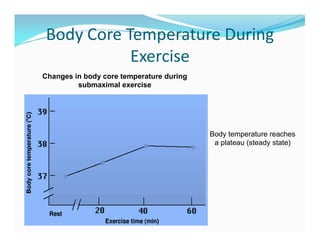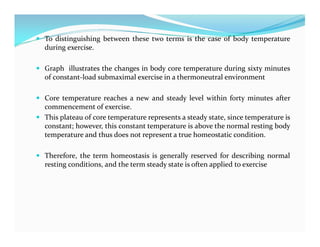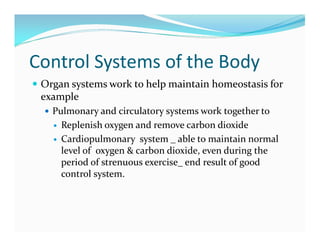The document discusses homeostasis and biological control systems. It defines homeostasis as the maintenance of relatively constant internal conditions, such as blood pressure and temperature, during unstressed conditions. Steady state refers to maintaining internal balance when the body is under stress, such as during exercise, where a variable may change but remain constant. Biological control systems use negative feedback to detect changes and activate responses to correct deviations and restore homeostasis. They have components like sensors, control centers, and effectors. Control systems with high feedback gain precisely maintain homeostasis. Examples describe systems regulating blood pressure and glucose. Failure of a component can cause disease. Exercise challenges homeostasis, but control systems can maintain steady state during most routine exercise.




























